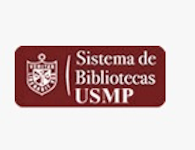Mostrar el registro sencillo del ítem
Variants in the N-acetyltranferase 2 gene, acetylator phenotypes and association with tuberculosis. Findings in Peruvian patients
| dc.contributor.author | Sánchez, Rodrigo | |
| dc.contributor.author | Laymito Chumbimuni, Lina Rocío | |
| dc.contributor.author | Oscano, Teodoro | |
| dc.contributor.author | Guevara, María | |
| dc.contributor.author | Moscole, Saul | |
| dc.contributor.author | Obispo, Daisy | |
| dc.contributor.author | Huerta, Doris | |
| dc.contributor.author | Fujita Alarcón, Ricardo Miguel | |
| dc.contributor.author | Acosta Conchucos, Oscar | |
| dc.date.accessioned | 2024-10-09T17:41:53Z | |
| dc.date.available | 2024-10-09T17:41:53Z | |
| dc.date.issued | 2024 | |
| dc.identifier.uri | https://hdl.handle.net/20.500.12727/15104 | |
| dc.description | Las políticas editoriales de Elsevier al 09/10/2024 permiten compartir el artículo aceptado (postprint) a través del instituto de investigación o repositorio institucional del autor para usos institucionales internos, o como parte de un grupo de trabajo de colaboración de investigación al que solo se puede acceder por invitación. Veáse https://www.elsevier.com/about/policies-and-standards/sharing | es_PE |
| dc.description.abstract | Background: Tuberculosis (TB) is a highly prevalent chronic infectious disease in developing countries, with Peru being one of the most affected in the world. The variants in Nacetyltransferase 2 (NAT2) gene are related with xenobiotics metabolism and have potential for TB studies. Aim: Associate the NAT2 gene variants, acetylator phenotypes and active tuberculosis in Peruvians patients. Methods: The design was cases (TB patients) and controls (population-based data). First, DNA isolation, and the variants rs1799929, rs1799930, and rs1799931 of the NAT2 gene were determined with sequencing. The acetylator phenotypes: Slow (SA), intermediate (IA) and rapid (RA) too were analyzed. Results: The frequencies of the rs1799931 variant in the patients, respect controls, showed significant differences and they are risk, both for the A allele (p=0.00; OR = 3.04, 95% CI: 1.88- 4.9) and the AG genotype (p=0.00; OR = 5.94, 95% CI: 3.17-11.09). The non-rapid acetylator phenotypes (SA+IA) too was found to be a risk factor (p=0.016; OR = 3.16, 95% CI: 1.29-7.72) Conclusion: The A allele, GA heterozygous genotype of the variant rs1799931 in the NAT2 gene and SA+IA acetylator phenotype shows strong association and increase risk for TB. In addition to xenobiotic metabolism, other metabolic and immunological functions of NAT2 are postulated for susceptibility to TB in the Peruvian population, characterized by its high amerindian component | es_PE |
| dc.description.sponsorship | Perú. Consejo Nacional de Ciencia y Tecnología (Concytec). Fondo Nacional de Desarrollo Científico, Tecnológico y de Innovación Tecnológica (Fondecyt). Proyecto de investigación: Perfil inmunogenómico y farmacogenomico para determinar la predisposición a hepatotoxicidad por tratamiento antituberculoso en pacientes peruanos. Número de contrato: CONV-000090-2014-FONDECYT-DE | es_PE |
| dc.format | application/pdf | es_PE |
| dc.format.extent | 17 p. | es_PE |
| dc.language.iso | eng | es_PE |
| dc.publisher | Elsevier Ltd | es_PE |
| dc.relation.uri | https://doi.org/10.1016/j.jctube.2024.100485 | es_PE |
| dc.rights | info:eu-repo/semantics/restrictedAccess | es_PE |
| dc.rights.uri | https://creativecommons.org/licenses/by-nc-sa/4.0/ | es_PE |
| dc.source | Repositorio Académico USMP | es_PE |
| dc.source | Universidad San Martín de Porres - USMP | es_PE |
| dc.subject | Genética médica | es_PE |
| dc.subject | Tuberculosis pulmonar--Aspectos genéticos | es_PE |
| dc.subject | Genes | es_PE |
| dc.title | Variants in the N-acetyltranferase 2 gene, acetylator phenotypes and association with tuberculosis. Findings in Peruvian patients | es_PE |
| dc.type | info:eu-repo/semantics/article | es_PE |
| dc.publisher.country | GB | es_PE |
| dc.subject.ocde | https://purl.org/pe-repo/ocde/ford#3.01.02 | es_PE |
| dc.type.version | info:eu-repo/semantics/acceptedVersion | es_PE |
Ficheros en el ítem
Este ítem aparece en la(s) siguiente(s) colección(es)
-
Artículos [13]








